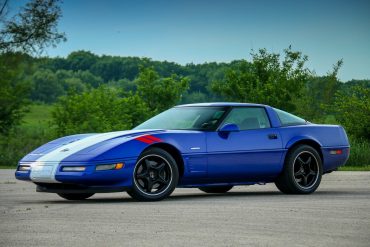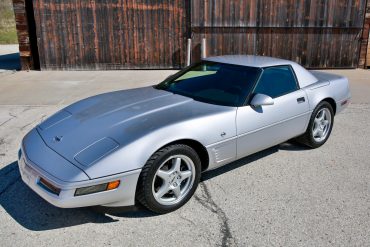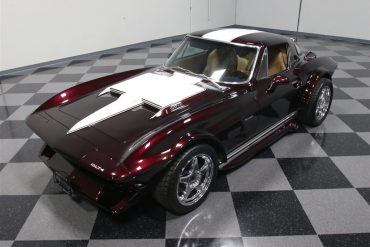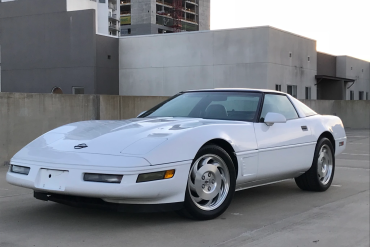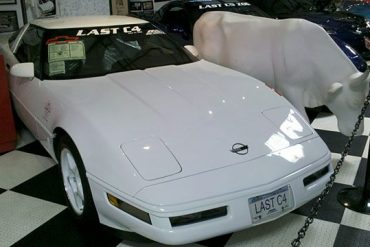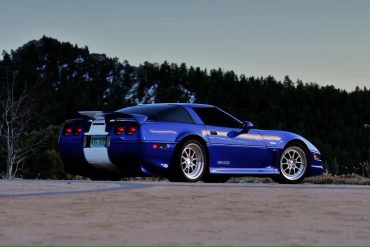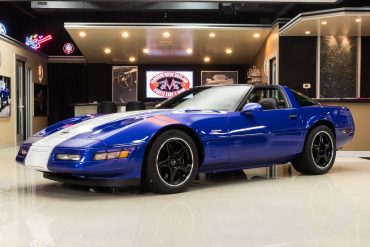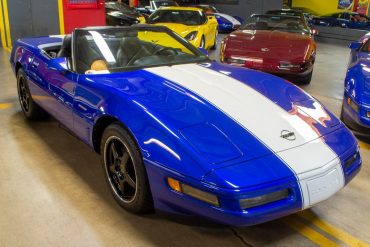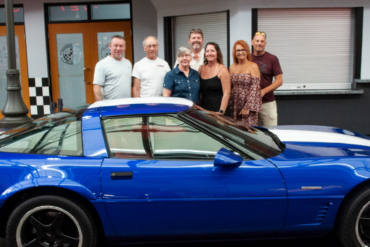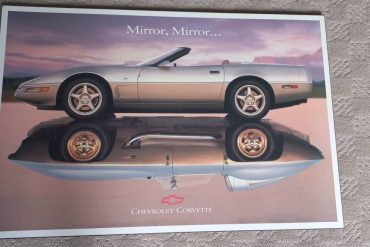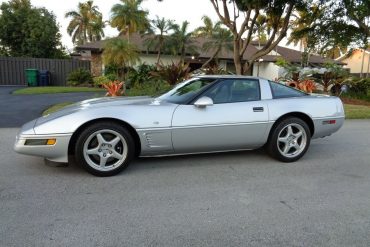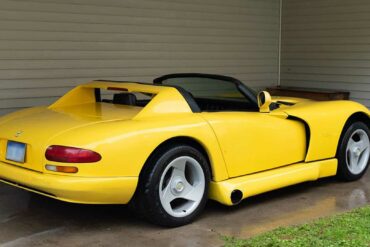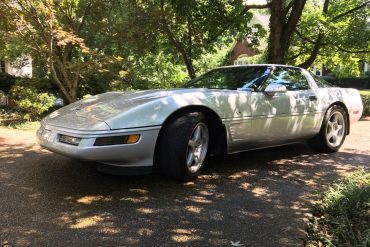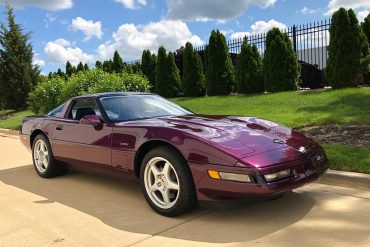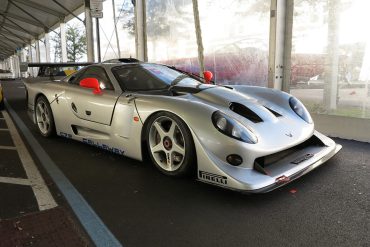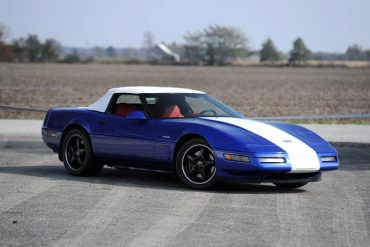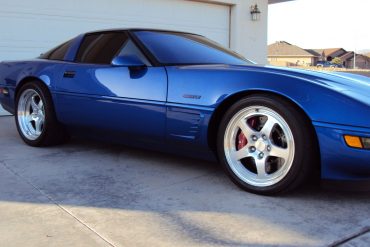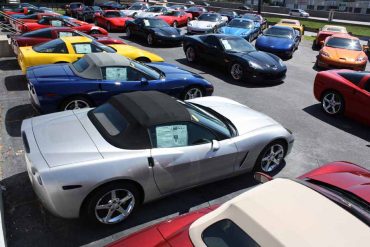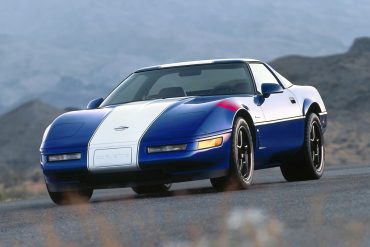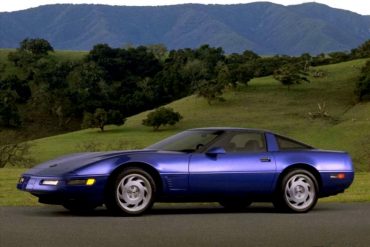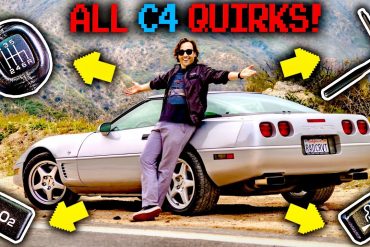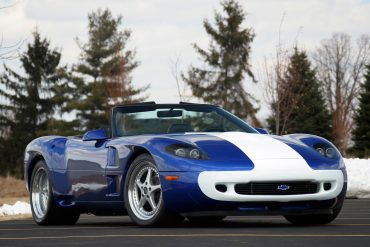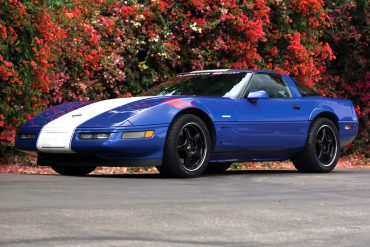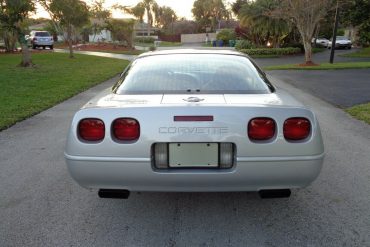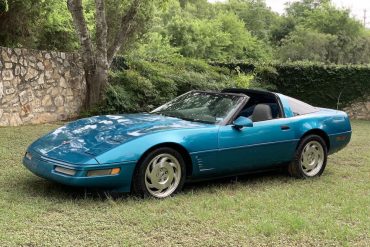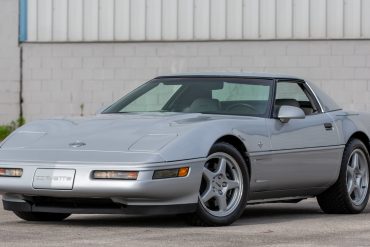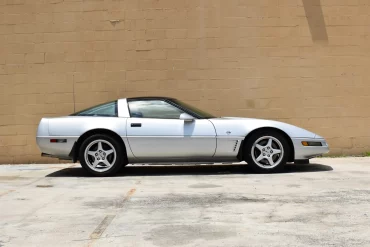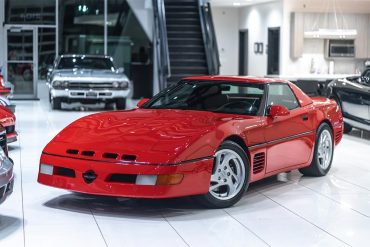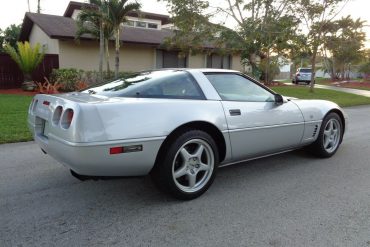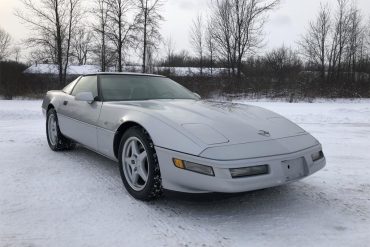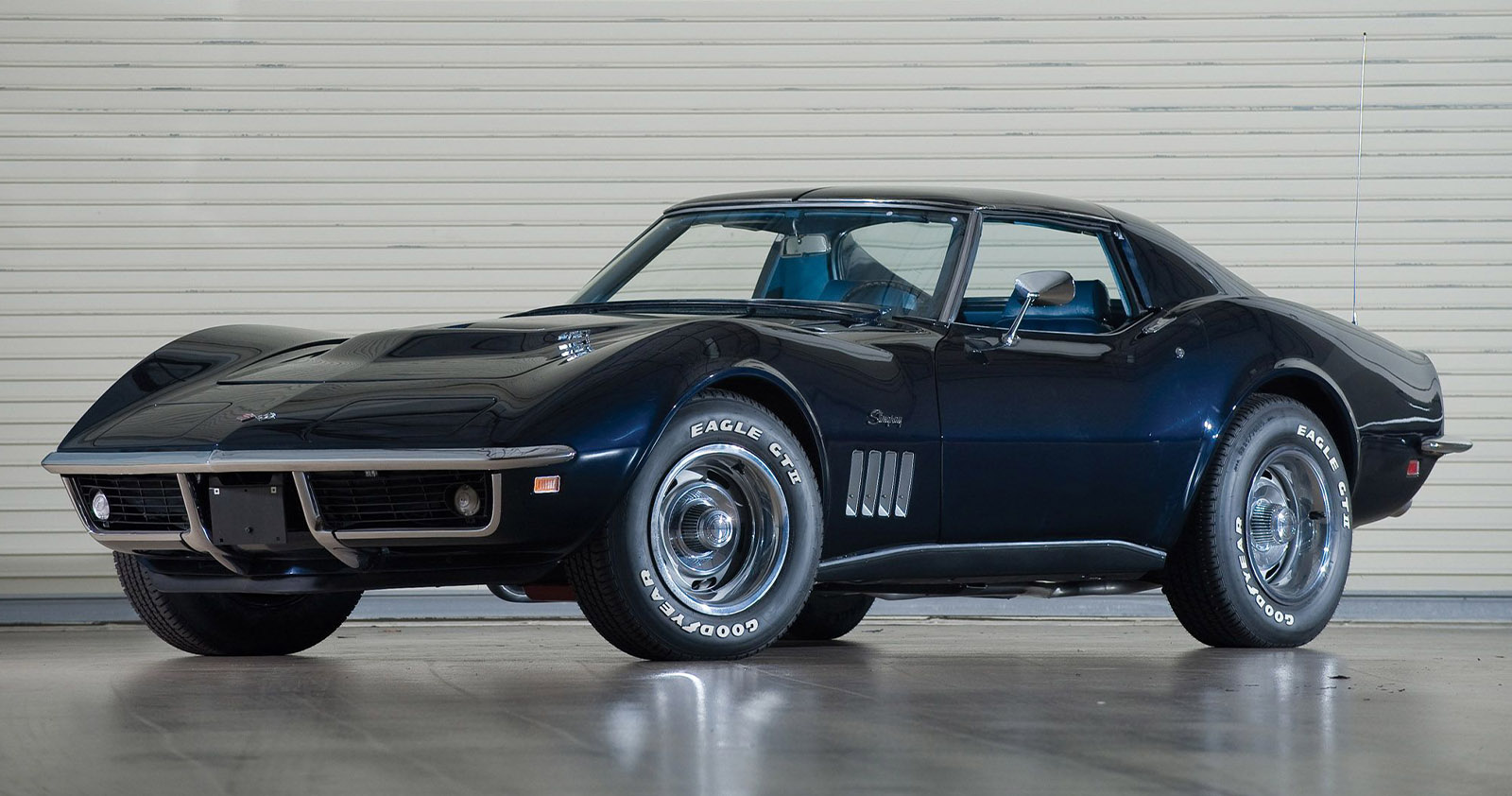The 1996 model year would mark the final year of both the C4 and the Generation II small block engine...
For all 1996 Corvettes, the Vehicle Identification Number was stamped on a plate on the inner vertical surface of the left windshield pillar visible through the windshield.
1966 Corvette Resto-Mod – More Than Meets the Eye! So you’re looking for a classic Corvette with the performance and...
The 1996 model year would mark the final year of both the C4 and the Generation II small block engine...
The Corvette Manufacturing Plant celebrates the completion of the Last C4 Corvette as it rolls off the assembly line on...
Denver Corvette dealer Purifoy Chevrolet collaborated with two successful Corvette tuners, John Greenwood and Doug Rippie Motorsports, to create “The...
This 1996 Grand Sport Is About As Clean As You’ll Find In Today’s Marketplace We haven’t had the opportunity to...
For Sale: A Rare 1996 Corvette Grand Sport Convertible Here’s your chance to buy one of the rarest Corvette models...
1996 Corvette Grand Sport Donated to NCM Many of the cars showcased at the National Corvette Museum in Bowling Green,...
1996 Corvette Ads We have curated a cool list of all the 1996 Corvette advertisements, commercials and posters we could...
For Sale – A Beautiful, Low-Mileage, 1996 Collectors Edition Corvette Coupe With summer just a few, short months away, now...
This is what a 1996 C4 Corvette kit car would look like if fitted with Dodge Viper body. Tell us...
A total of 21,536 Corvettes were manufactured and sold in 1996. As the model year drew to a close, it was good to see a small, but significant, sales increase had occurred.
Dark Purple 1996 Chevrolet Corvette We found some examples of 1996 Corvette in the Dark Purple color scheme. These real Dark Purple paint pictures...
The Callaway C7 was a completely new, purpose-built car designed to embody the company’s motto: “Powerfully Engineered Automobiles”, carrying on the visual tradition of design by Paul Deutschman and offered in a limited production series. The C7 was the first complete, bespoke Callaway Automobile. This sportscar was equipped with a carbon chassis, front mid engine/rear transaxle design, 650 horsepower SuperNatural engine.
1996 C4 Corvette Ultimate Guide. History, Production Stats & Facts, Engine Specs, VIN Numbers, Colors & Options, Performance & Much More, we cover it all.
Admiral Blue 1996 Chevrolet Corvette We found some examples of 1996 Corvette in the Admiral Blue color scheme. These real Admiral Blue paint...
So You’ve Always Wanted a Corvette But Never Thought You Could Afford One? We Take You Through Some Options. Almost...
The early C4's had their problems, what with the 1984 Cross-Fire Injection and its unusual 4+3 manual transmission. By the late 1980's, the fourth-generation Corvette had evolved into a more desirable automobile, thanks in part to the arrival of the ZR-1.
The following list of common issues is intended for individual reference only, and may not reflect the specific issues of every 1996 Corvette.
Here is a list of all the quirks and features you probably didn’t know about the C4 Corvette....
To understand why the Guldstrand GS-90 coupe and convertible differ so much, keep in mind that during the course of the C4 development cycle, no ZR-1 convertibles were planned, so the base C4 convertible had to be used in building a GS-90 Nassau Roadster, as it was called. The coupe, however, had the advantage of using the ZR-1 platform right from the get-go.
We have curated the ultimate collection of the 1996 Corvette Wallpapers and HD backgrounds for you to enjoy. Free to download
Looking for information on how to maintain your 1996 Corvette? We've curated resources to help you keep your Corvette in great shape for years to come!
Get a Beautiful Corvette Coupe The C4 Corvette’s last year was 1996, and the car was a seriously good version...
The Special Edition Corvette, which included a special Sebring Silver paint color, 5-spoke matching alloy wheels with special “collector edition”...
Chevrolet knows their clientele, and with the 1996 Corvette Collector's Edition LT4, the automaker put together a special package that would entice hard-core 'Vette fans with a unique tribute to the outgoing C4 model. The $1250 option brought unique Sebring Silver Metallic paint, 5-spoke wheels, and, of course, special badges and embroidery. It also received the upgraded LT4 powerplant available in the Grand Sport, and with 330 horsepower on tap.
Chevrolet's introduction of the LT1 in 1992 as the base engine in the Corvette phased out the L98 based Callaway Twin Turbo. Previously, Callaway Corvettes made their increased power through positive manifold pressure; now they made it through increased displacement and finesse. Initially called the CL1 or CR1, they designated the chassis they were built upon. They were based on the pushrod LT1 cars (CL1) or the 32 valve DOHC LT5 ZR-1 cars (CR1).
The 1996 Corvette was maturing as both a performance platform and as an aesthetic knockout. Get all the options, pricing, and color data here.
Sebring Silver 1996 Chevrolet Corvette We found some examples of 1996 Corvette in the Sebring Silver color scheme. These real Sebring...


